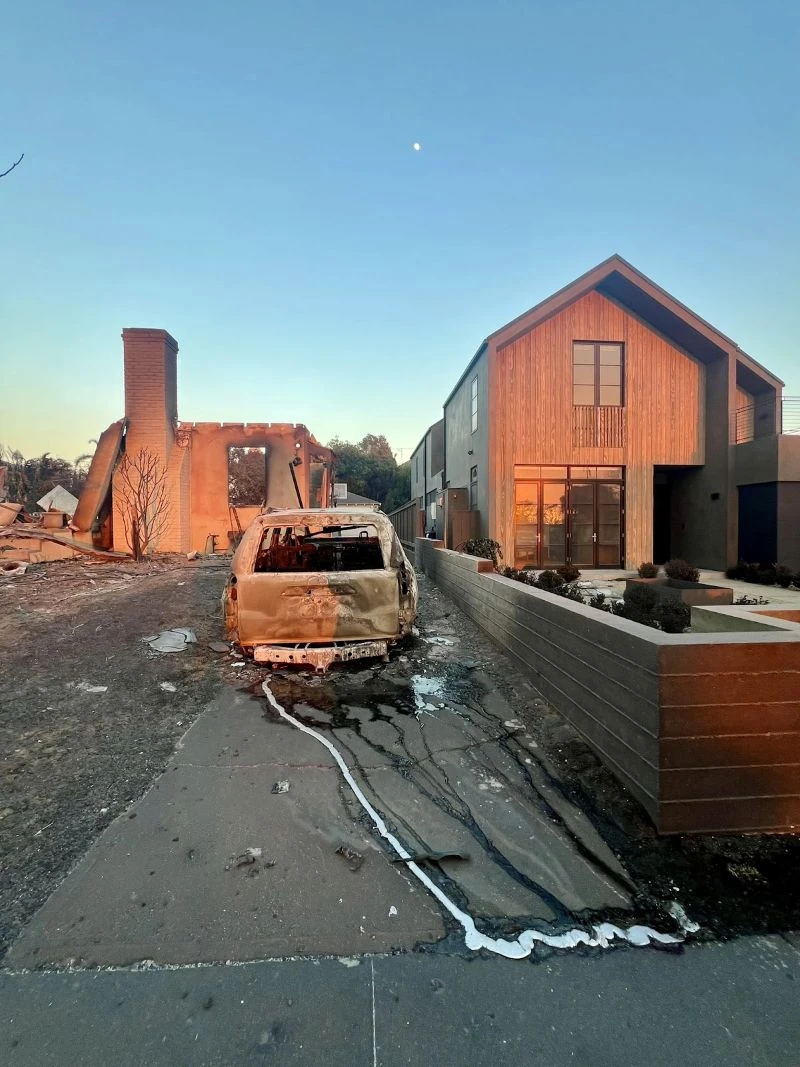Open and Accurate Air Quality Monitors
We design professional, accurate and long-lasting air quality monitors that are open-source and open-hardware so that you have full control on how you want to use the monitor.
Learn MoreWhy is wildfire risk increasing?
According to the U.S. Drought Monitor, since the start of the water year (October 01, 2024) there has been extreme to
near-record dryness which has expanded and intensified drought conditions in southern and central California and Nevada.
Adding to the risk, strong Santa Ana winds have swept across Southern California, creating the perfect conditions for
wildfires to spread rapidly through dry vegetation.
Following the devastating Los Angeles wildfires of 2025, questions arose about the cause of the widespread destruction of the wildfires especially in residential areas. While climate disasters are becoming more frequent, their impact often depends on how well urban areas are designed to withstand them.
One key question emerged from this climate disaster: What vulnerabilities made the LA wildfires so devastating?
How did the fires spread so easily?
Wildfires are unplanned, unpredictable and uncontrollable but their impact can be influenced by human decisions. Some of the key factors that contributed to the rapid spread of the 2025 LA fires were:
Why did so many homes easily catch fire and add to the destruction?
The hardest-hit areas - Palisades, Eaton, Hurst and Auto were home to some affluent neighbourhoods with older building structures that were constructed with flammable materials such as:
The House That Survived: A Blueprint for Fire-Resistant Homes
One image of a single house that withstood the flames in Palisades went viral following the 2025 LA fires. This home was built in 2024 and designed by the Californian architect Greg Chasen along the principles of Passive House Design.
Passive buildings are built to maintain a rigorous level of energy efficiency whilst creating comfortable indoor spaces through meeting key criteria in space heating demand, space cooling demand, primary energy demand, airtightness and thermal comfort.
The key features of this house that were thought to have attributed to its fire-resilience were:
Going forward this modern fire-resistant home design serves as a potential model for retrofitting old homes and building future housing in wildfire-prone areas.

Beyond the Flames: What About the Long-Term Health Impact
The LA wildfires raged from Jan 7th to around Jan 27th, leaving behind more than just charred landscapes. The toxic aftermath is an emerging public health crisis. In addition to the combustion of vegetation there has been the combustion of building materials and household items resulting in the release of hazardous pollutants such as lead, polyaromatic hydrocarbons, asbestos and other harmful chemicals.

How long will these pollutants linger in the air? What are the long-term health effects on exposed communities?
The quality of air in the affected regions needs to be assessed with clear identification of the type as well as the quantity of pollutants released into the air as a result of these flames. Additionally, further studies should be conducted to determine the duration of time that the effects of this wildfire event will affect the quality of the air in the affected zones.
Assessing air quality and linking findings to increased health risks will be crucial for effective future public health interventions.
“The danger of wildfires doesn’t end when the flames are extinguished. The air in affected areas can remain hazardous for weeks or even months due to lingering toxins. Fine particulate matter and chemical pollutants can trigger respiratory diseases, worsen heart conditions, and increase long-term cancer risks. This is why real-time air quality monitoring is essential — not just for immediate health warnings, but for long-term public health planning and mitigation efforts.”
The Path to Futureproofing Homes for Wildfire Resistance
The future risk of further wildfire events is strong as climate change is propelling the world to increased frequencies of climate disasters. As such efforts must be made to protect the interests of individuals in areas at risk of climate disasters. Going forward urban planners, policy makers and homeowners must rethink housing design to prioritize fire resilience and health safety.
Key Strategies:
Will fireproof homes become the next gold standard in climate resilience efforts? The answer to this question may shape the future of urban planning, public health and environmental sustainability.
“Wildfires are becoming more intense due to climate change, posing growing risks to communities and public health. By integrating climate-conscious urban planning, fire-resistant buildings and real-time air quality monitoring, we can improve climate resilience and protect lives.”

Curious about upcoming webinars, company updates, and the latest air quality trends? Sign up for our weekly newsletter and get the inside scoop delivered straight to your inbox.
Join our Newsletter
We design professional, accurate and long-lasting air quality monitors that are open-source and open-hardware so that you have full control on how you want to use the monitor.
Learn More